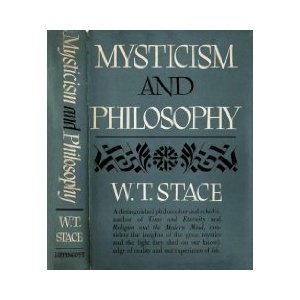
مستخلص بالعربية:
يحاول الفيلسوف التجريبي وليم تيرنس ستيس (+1967) حل مشكلة الأخلاق في العقل الحديث على أساس تجريبية وموضوعية الخبرة الصوفية. وترجع أهمية محاولته إلى كونه فيلسوفًا تجريبيًا يدرس الخبرة الصوفية بمنهج تجريبي، ليرجع أساس الأخلاق إلى التصوف وليس إلى الدين، ويرى في هذه المحاولة أن كلاً من الدين والأخلاق فرعان لجذع واحد هو التصوف. يتعرض ستيس إلى أسباب انهيار قاعدة الأخلاق في العقل الحديث، وهي الأسباب التي ترجع أصلاً إلى انهيار فرضية الغائية في العالم وسيادة النظرة الميكانيكية الوضعية، وينتقد المواقف الفلسفية الأهم من الأخلاق بدءًا من ديكارت وهوبز وحتى فلاسفة الوضعية المنطقية كشليك وكارناب وإير، ليخلص في النهاية إلى أن كلاً من الدين والأخلاق ممكنان بناءً على موضوعية الخبرة الصوفية. إنها محاولة تضيف الجديد والمثير للاهتمام لدراسة الخبرة الصوفية، إذ يعتمد في ذلك على المنهج التجريبي، وحيث تسود في هذا المجال منهجية الحدس والإيمان المسبق غير العقلاني.
Mystical Ethics
A Study in the moral philosophy of W. T. Stace
(1886-1967)
By Kareem Essayyad
Contents
- introduction
- The problem of ethics in the modern mind
- Is a religion possible ? (Basis of religion)
- Are ethics possible ? (Basis of ethics)
- Conclusions
- Bibliography
Introduction
W.T. Stace (1886-1967) is one of the most important philosophers in the western history of thought, who was concerned with the deepest and most universal problems in the modern world in general, and who reached some extraordinary absolutions.
One of his big concerns was the ethical problem in its most general aspects. He traced its linkages with religion, science, mysticism and the modern western view of nature of the modern common philosophical systems, specially logical positivism and analytic philosophy.
Although he can be included in some traditional conclusions, the special quality which made him rather different from who ended to the same ends was his consciousness of the scientific view to the world, and his critical view to both scientific and religious ones.
His very far -or very high- step was to try to make some reconciliation between empiricism and mysticism, not by interpretation, but by the empirical methodic steps of induction, as it shall be seen soon.
This paper aims to pursue and describe stace’s trial of solving the ethical modern problem which he presented in separated books, especially “Religion and Modern Mind” and “Mysticism and Philosophy”. He did that through the main stages we can enumerate as follows:
- Showing the manners determining the medieval view to the universe. This step is important to explain the problem of the modern mind of religion and ethics, briefly we can say that the modern problem of ethics emerged as an accidental result of the scientific revolution, but not as a methodological one. This step can be considered as an introduction to the next.
- Showing the manners of the modern view to the universe. This is made by a special concentration on three elements: the existence of God, teleology of the world and the ethical view of our universe, showing the differences between the medieval and modern points of view in these three aspects. These three points are strongly correlated to each other in a system begins by theism which mostly leads to the belief in teleology of our world. This teleology can establish a kind of objectivistic values to obtain an objectivistic – or altruistic if we are more accurate – ethics.
- Confirming that the essence of morals should be, and can only be, the mystical view, not the mechanical (in the modern age) nor the religious (in the medieval age). To make this step he tried to describe scientifically the mystical experience and to affirm its common existence even in animals. He also had to explain his new idea; the mystical element is the real substance of every religious experience. Hence, comes the final step:
- Finally he tried to present his ideas as a digestible matter of thought to the modern mind. Then he tried to conciliate between mysticism and empiricism, firstly by the refutation of the objection of empiricism against mysticism, and secondly by inducing the objectivity of the theosophical experience all over the world major mystical groups by a semi-scientific method.
Now, we can pursue these stages, to come finally to some critical observations that form the final conclusions in the end of this paper.
– 1 –
The problem of ethics in the modern mind
1- Medieval view of the universe:
In the very beginning, we should understand the fact that, the view of the medieval human being to his universe was controlled by religion, unlike modern-man’s one, which is shaped through science. To make use of this section we should remember that distinction([1]).
This control or shaping does not provide us with any kind of information about our universe directly. The geological age for example is not present directly in the holly book, but was calculated from it. And the existence of God, on the other hand, is not demonstrated by science as a fact, nor the opposite. Stace represented that control and shaping as a background in man’s consciousness, very general background. It controlled men’s views psychologically, not logically([2]). This is the second important point we should take in our consideration.
By these previous two points, Stace could explain how the role of religion was decreased while the mechanical view extended, although the mechanical view itself did not refuse religions. These realities may by the essential addition to the modern philosophy in this book.
The medieval view in points was as follows:
- World was created from nothingness by God, in 4004 p.c. commonly. Dante thought it was created in 5200 p.c. This world may come to an end in 4004 A.C., and there were three great events which formed the universal and historical drama: Adam’s fall, incarnation of Jesus and the day of Judgment([3]).
- this world is spherical or circular, and it is the centre of universe. Everything goes around it. That gave human beings some divine essence, or was a result of believing in such divinity in them([4]).
- Being created by God, world behaves according to some divine plan, which human beings should know and behave in their lives according to a corresponding plan. This corresponding plan is ethics.
After this exposition we can reach three main realities about the medieval view;
- God does exist.
- This universe is designed to reach a determinate aim, or controlled by it.
- This universe is ethical. (For it has a rational and moral end of God’s own)
We can observe the association from 1 and 2 to result in 3, as the existence of God forced psychologically the human mind to arrive to the belief in teleology (no. 3) and that teleology being objective led it to an objectivistic system of ethics.
That could have continued forever, but the scientific revolution changed something important in the unconscious background we spoke about erstwhile.
2- The Scientific Revolution:
The birth of modern science was during the 17th. century, in which some famous splendid scientists and thinkers deconstructed and reconstructed the medieval view.
Firstly, came Copernicus (1473-1543), his most famous achievement was the theory of heliocentrism instead of geocentrism. The ancient science supposed the apposite giving the following facts:
- Earth is fixed.
- All planets go around it.
- Planets courses are circular([5]).
This complex movement was supposed for every planet and star in the sky, with that conversion in the shape no. 1. What was achieved by Copernicus is to simplify that diagram. He observed that this conversion could be explained if we suppose the earth goes around the sun, and all planets do so([6]).
Then came Kepler (1571-1630) with his three laws of the movements of planets, and Galileo (1564-1642) with his discoveries. Stace explained all of this and came to an end which he thinks it can sum up all the conflict between science and religion, for example the situation of Galileo against men of religion when they refused all his discoveries not to miss with their beliefs([7]). Stace deduced that this conflict was not a scientific nor religious, but was a philosophical one between the teleological view of the universe, and the causal classical one.
In a previous location it was ensured that the teleological view to the universe is not contradicted methodologically with the causal, because an end can be converted to a cause if there is a desire to do so. One may think there is a cause really for the falling of the apple, and that cause (general law of gravitation) is God-made for certain purposes. God’s will can be a theological-natural-supernatural cause.
That causal mechanical view of our universe achieved a historical victory, and became the general theory of Newton (1642-1727) and Laplace (1719-1827), and psychologically got rid of the divine providence and was the reason why people became behaving as if God does not exist, although science did not confirm that or refute the opposite at all.
What is important here is that the view of the world does not aim to any thing. Either God exists or not, this view could eliminate every kind of objectivistic criteria of ethics, leading to the subjective ethics or relativism.
For stace, the relativity of morals does not make any kind of morals, because the essence of ethics is altruism, and the essence of all evils is egoism([8]).
3- Breakdown of Morals:
We should understand an important fact of Stace here. He did not agree with any kind of relative ethics and thought the basis of the objective ethics in the medieval age was the Judeo-Christian tradition which was crystallized around the dogmatic belief in God’s existence([9]).
Existence of God is not activated if we do not believe in providence, and that existence is the sole essence -or basis- of the objective criteria of ethics. In the long chain of causes we are supplied with by mechanism, we can not easily find a place for God. Even if he is -or was- in the beginning of it, he is now very far from us. Psychologically, we begin to behave as if God does not exist in our lives([10]).
There were logical contradictions between mechanism (or science) and religion. The contradiction is psycho-methodological in nature. We can find three causes made this contradiction:
- Achievements of science: people were dazzled by the modern discoveries and inventions, and they knew that the revolution of 17th century was because scientists became concerned more in causality and mechanism. (Not the opposite!)
- Complete causal explanations: Any teleological explanation became accessory and useless, or even against the spirit of the natural science.
- Concentration on causes only: to attain scientific progress.
When the teleological view disappeared from modern mind, here came an ethical problem. That was because Stace thought that teleological view is the basis of the objectivistic criteria of morals, without it we can never reach any morals but relative individual or utilitarian societal ones. We here observe him going beneath ethics commands to discover its origins, walking the same way as Nietzsche (1844-1900) and differing from him in the end. Nietzsche reduced these commands into the conflict amongst powers and desires of human beings: “Jews, people who come to existence for slavery, with all ancient ages… succeeded in converting values… Converting the poor to be a saint or a friend”([11]).
– 2 –
Is a Religion Possible ?
– Basis of Religion –
Mentioned previously is the breakdown of religion and morals in the perspective of Stace. Now we talk about the possibility of a religion in the modern world and mind.
Some philosophers agreed with Stace’s view to the religious basis of morals, like Paul Tillich,. The latter believed that providence can supersede the ountic anxiety, while forgiveness supersedes ethical anxiety, while the existence of God supersedes the spiritual one”([12]).
Another existentialist may agree also within limits. J.P. Sartre refused the secularist ethics saying that “the existentialistic philosopher strongly rejects that kind of secularist ethics, which tries to dismiss God paying the minimal exertion”([13]). But we may observe the different meanings. It is the difference itself between mysticism and atheistic existentialism. Although there is some field for the comparison between both.
Some other philosophers refused the religious basis, like Kai Nielsen who thinks that the religious ethics infantilizes us by its their pressure on concern and providence([14]). Among Arabic thinkers we can find Adel Dahir who believes that ethics are former to religion and may be the basis of it, otherwise how can we have any knowledge about the good nature of God, if we do not have any knowledge about goodness itself? If we have the latter knowledge, why do us need religions to be ethical? ([15]).
We make these comparisons because Stace himself made some of them during his research in “the effect of mechanism on philosophy”. He found some philosophers strongly affected by mechanism positively and tried to develop a view about the universe and mind based on it. Like Descartes, Hobbes, Hume, Comte, Vahinger and the logical positivists like Moritz Schlick, A. J. Ayer and R. Carnap. He also found who were negatively affected and reacted, like Descartes (again), Berkeley, Kant, Hegel and idealists after Kant, romanticism and the absolute idealism in England and U.S.A. ([16]).
On those comparisons Stace rested the ability of religion to make sense to the modern mind by ethical view to nature and humanity.
Descartes adopted the famous dualism: Body and soul. He agreed with mechanism completely in the field of body and extension, but he also agreed with the religious view in the spiritual field. Therefore we find him on both of the two fronts([17]). He made a relation between God and the world when he thought the existence of materials depends on the existence of God himself. Consequently, the existence of God was substantial to maintain his system([18]).
Hobbes (1588-1679) was the first naturalist philosopher in the modern ages, his belief in God was accidental, while his theory of the world was completely materialistic even concerning the soul. He believed also strongly in mechanism and general causation, and made ethics relative and individual([19]).
Hume (1711-1771) was more powerful and effective. He went further than Hobbes in his criticism of causality, in brief we can say without any exaggeration that his refusal to the necessity was an effective element in the developing of non-teleological view of the universe. Necessity, according to him, is not a given fact, and it is of daughters of our minds([20]).
Reaching Vahinger, we can see a restrictive refusal to the absolute from the point of view of the critical positivism, there is nothing called the “Absolute”, “the thing in itself”, nor “the self”. Nothing survives except sensations. They are the existent and the given, from them world entirely came in its natural and psychological partitions. Critical positivism asserts that every other claimed different opinion is a mere subjective difference that cannot be real in terms of positivism. There are only phenomena, they are existent and uniformed… any explanation different from that cannot explain anything otherwise by fictions”([21]).
Comte (1798 –1857) – according to stace- derived his ideas from Hume. He presented the formal formula of the positivism. He divided the history of human race into three stages: the theological, the metaphysical and the positivistic stages. In the first stage man learned to explain the natural phenomena by Gods and souls. In the second he began to explain them as some kind of abstract powers and laws. But in the third he explained all phenomena by observable events. It is the scientific stage([22]).
Stace reaches- in his brief exposition to non-teleological doctrines -logical positivists. They agree with Comte that all metaphysical sentences are meaningless. Their enemies were fond of assuring that the positivism itself has its own metaphysics unconsciously, but it all depends upon the meaning given to metaphysics. The point here is: no fact but facts of science, no science but mathematics and natural sciences. According to this, Ethical statements are meaningless, and are considered instead as imperative formulae([23]).
Stace turns to the opposite side, i.e. the side of the religious philosophies. He begins by the theory of extreme idealism of Berkeley, this theory denied the objective existence of things and considered them as being products of our perception. Nothing can be or maintain its being unless there is a mind – one at least – to perceive it. This idea led him to the hypothesis of the existence of God. Things would stop existing without a mind experiencing them, then we should assume God is existent([24]).
Kant also reached the same view in a different way. Kant’s proper success was the discrimination between the two worlds: world controlled by teleology, freedom and stability, and another world controlled by causality, determinism and becoming. That differentiation enabled him to adopt the two views – scientific and religious – completely without exceptions, because each view can be applied to the world that it belongs to. That was the main idea in his Critique of Pure Reason([25]).
Stace turns afterwards to romanticism referring to its trial to work against the positivistic view by discovering ambiguous elements in nature around atoms and rays. That was shown through some examples from the English romanticistic poetry([26]).
He ends to the beginning of the 20th century when idealism and romanticism failed in their own aims and the scientific stream came back extremely although the discoveries of the contemporary physics, e.g. General Theory Relativity and Quantum. On the literary front, realism in literature became the dominant tendency([27]).
Till now, Stace has shown the conflict and its fate. He will present his own theory about the possibility of religions in the scientific civilization. To be clear, we should ask these questions:
- Does religion contradict with science itself methodologically and/or theoretically?
- If it does not, can we believe in God?
- If we can, what is the nature of God exactly?
- If we know it, what is the essence of religions?
Firstly, Stace, as we mentioned, does not think there is a real contradiction between religion and science. He believed the problem of that claim was arisen and developed by philosophers not by scientists. Science does not say a word about the religious reality, positively nor negatively. We can see here a Kantian division. We can attack the religious realities by our scientific and logical tools, but in vain. Vainly also we try to demonstrate God, angels and revelation scientifically. The previous sections ensured this enough by turning the methodological and logical contradiction between religion and science to a psychological one successfully, if we can say so([28]).
Can we believe in God according to the arguments of His existence? Stace naturally, and according to his previous point of view, cannot accept any scientific or pseudo–scientific arguments. He cannot accept scientific ones because this will be interference between science and religion which he separates one from another. And he cannot also accept the pseudo–scientific arguments because it will be a false inference scientifically. He can only, and wants really to, accept a non-scientific argument.
Accordingly, he began to refute all classical arguments on being of God by a self-discussion and self-criticism. He confuted them one by one. He discussed the argument of “the chain of causes” which tries to prove God’s existence by supposing there is surely a first cause to all causes of being and change in the world, namely God. Stace asks himself why there should be a first cause, why we consider the infinite regress is a fallacy([29]). Moreover, if there is a first cause, why we imagine it as a mind or a soul, why it is not a mere material cause. He reaches at the end to a conclusion that this conception was, in fact, a teleological one, to serve moral points of view([30]). He discussed also the argument of miracles, he thought they are too old to persuade anyone of anything.([31]).
Then he came to approach God’s nature, he analyzed it and discussed every quality. Firstly, it is said God is a mind or awareness, eternal, omnipotent, omniscient, universal, perfect and pure goodness. He focused here on the paradox, classical indeed, of stability and change. God is supposed to be constant in his nature because he is eternal, and that contradicts with His being as a universal mind because we here should understand the word “mind” in its human meaning i.e. like the human mind which consists of a chains of changeable ideas. That is not consistent with the stability supposed([32]).
Another paradox is related to the creativeness of God, because of the contradiction between the creating activity and eternity. One comes from change and the other comes from stability([33]).
The third paradox shown here is of the omnipotence of God. It contradicts with the rules of logic and the existence of evil in the world, that paradox was discussed in details by Hume([34]).
Some thinkers after complete despair ended to the idea of secrets, according to it we can believe in some irrational believes considering them as secrets i.e. accepted ideas even they are contradicted with the natural logical mind([35]). Stace cannot be supposed, being an empiricist, to accept such a situation which jump from complete ignorance and scruple directly to a completely devoted faith.
Stace then tried to solve the problem by understanding the essence of religion in general “the essential reality of religion, of every religion, is that there is some way to go outside the darkness of this life, a way to light. No aim for our way now, but the aim of the another way is delight and cheerfulness.. then what is that way?” ([36]).
For stace there are two ways: ethical, which he severely refuses to be the essence of religion, because it lacks itself an empirical proof, and mystical, which he affirms that it is the real essence of every religion, and which he thinks it does not lack such a proof. According to him Mysticism is immanent in every religious experience, for it is not confined only to they who are the so-called mysticists([37]).
He began then to analyze the mystical experience and found four special properties([38]):
- All in one, and one in all, i.e. the unity with the Absolute.
- The surreal vision, a vision which is outside time-place and mind.
- That vision cannot be described by words, because words depend in its function of distinction, and there are no distinctions in that kind of visions.
- That experience is of cheerfulness, happiness, peace and freedom.
Here, Stace arrived to the middle of his way to morals, in the next chapter, he would complete it.
– 3 –
Are Ethics Possible ?
– Basis of Ethics –
Stace thought the mystical experience could be a successful source of moral commands, but he had to show two points:
- How can the mystical experience be a basis for ethics?
- Is it an objective experience? Is its matter objective?
The last point is divided into two partitions: the first is related to the experience itself being objective or not, i.e. being available for every human being. The second is related to the object of that experience, its knowledge being objective or subjective.
Stace answers the second question by asserting that “the basis of the mystical theory of ethics is that the separateness of individual selves produces that egoism which is the source of conflict, grasping, aggressiveness, selfishness, hatred, cruelty, malice and other forms of evil; and that this separateness is abolished in the mystical consciousness in which all distinctions are annulled… no separateness of I from you, or of you from he, and that we are all one in the Universal self- the emotional counter part of this is love. And love, according to the theory, is the sole basis, and also the sole command, of morality“([39]).
Hence, he called that experience “trans-subjective”, in which we cannot find any duality between the object and the subject; all is in one, in the universal self.
But there is still the first point with regard to objectivity, some people have not any moment of theosophical feelings, what is the proof they all have some kind of moral ability? Stace believed every one of human beings had some moments of mystical experience, even if he was not aware of it([40]).
There is a reason for the epistemological and linguistic isolation of mysticists from others. Stace thought there are two theories explaining this, the first is the emotions theory, according to it, the deeper our feelings are, the harder to be expressed. That is a problem of ineffability; it is not only a problem of language, but of logic also, because emotions are so complicated and ambiguous. The second theory to explain this is the spiritual blindness; people cannot easily understand the mystical experience exactly as a blind man cannot understand the word “red”, but stace made certain of this, the problem here is a mere linguistic one, and the mystical experience is universal([41]).
Stace believed that, the data of such experience are objective because of what is called catholicity Evidence. That evidence depends upon the similarity amidst mystical experiments all over the world, and that is a proof of the honesty of mysticists and of the objective truth of the mystical experience([42]).
CONCLUSIONS
Previously, we talked about the mystical ethics of W.T. Stace in three main topics:
- The problem of ethics in the modern mind: and showed that the modern mind was so different from the medieval one. The point of difference was the scientific revolution in the 17th It changed a lot of concepts of human kind about world by determinism and causation, and the contradiction between science and religion was neither a scientific contradiction nor even a logical one, but it was psychological in nature. There is not a real contradiction between them.
- Is a religion possible?: and said that there were some philosophical trials to get the religious mind back and vice versa. We talked about some of these trials and showed that, the ethics cannot be based on the religious basis of medieval age.
- Are ethics possible?: and talked about the trial of stace to set up some kind of ethics theoretically upon mysticism, considering it the essence of every religion. Mysticism can be the basis of ethics for the contemporary mind because it is the source of love, and it can eliminate the distinctions between the ego and the others, and it covers all the distance between the object and the subject.
Bibliography
- Primary literature:
- Stace, W. T., Mysticism and philosophy, J.B. Lippincott company, USA, 1st. Ed., 1960.
- ستيس، ولتر ترنس: الدين والعقل الحديث، ترجمة: إمام عبد الفتاح إمام، مكتبة مدبولى، ط1، القاهرة 1998م.
- Secondary literature:
- Moreland, J.P. and Nielsen, Kai, Does God Exist ?, Prometheus Books, Buffalo, New York, N.E., 1990.
- سارتر، جان بول، الوجودية فلسفة إنسانية، ترجمة: حنا دميان، دار بيروت، لبنان، د.ط، 1954م.
- نيتشه، فردرش، ما وراء الخير والشر، ترجمة: محمد عظيمة، المكتب العالمي للطباعة والنشر، بيروت، د.ت، د.ط.
III. References:
- أحمد، عاطف، الإسلام والعلمنة، دار مصر المحروسة، القاهرة، ط1، 2004م.
- الخولى، يمنى طريف، الوجودية الدينية، دار الثقافة العربية، القاهرة، 2005م، ط2.
- مدين، محمد محمد، نظرية المعنى عند والتر ستيس، دار الثقافة للنشر والتوزيع، د.ت، د.ط.
VI- Web Sites:
([1]) ولتر ستيس، الدين والعقل الحديث، ترجمة: إمام عبد الفتاح إمام، (مكتبة مدبولى، ط1، 1998م) ص 23.
([8]) W. T. Stace: Mysticism and philosophy (J.B. Lippincolt company, USA, 1st. Ed., 1960) p. 324.
([9]) www.philosophy.lander.edu/intro/stace.html.
([10]) ولترستيس: الدين والعمل الحديث، ص 104: 108.
([11]) فردرش نيتشه: ما وراء الخير الشر، ترجمة: محمد عضيمة (المكتب العالمى للطباعة والنشر، بيروت، د.ط، د.ت) ص 220.
([12]) يمنى طريف الخولى: الوجودية الدينية (دار الثقافة العربية، القاهرة، 2005، ط2) ص120-121.
([13]) جان بول سارتر: الوجودية فلسفة إنسانية، ترجمة: حنا دميان (دار بيروت، لبنان، د.ط، 1954م) ص23.
([14]) J. P. Moreland and Kai Nielsen, op. cit., p. 102.
([15]) عادل طاهر، نقلاً عن عاطف أحمد: الإسلام والعلمنة (دار مصر المحروسة، القاهرة، ط1، 2004) ص 194.
([16]) ولتر ستيس: الدين والعقل الحديث، ص 171.
([39]) W.T. Stace, mysticism and philosophy, J.B. Lippincott company, USA, 1st Ed., 1960, p. 324.
([41]) www.homepages,ihug.co.nz/drandmkw/spirit/wtsy%20%20mb6.
([42]) محمد محمد مدين: نظرية المعنى عند والتر ستيس (دار الثقافة للنشر والتوزيع، د.ت، د.ط، ص 159.




